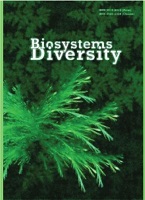Influence of organic acids on locomotor activity of Stratiolaelaps scimitus(Mesostigmata, Laelapidae)
Influence of organic acids on locomotor activity of Stratiolaelaps scimitus(Mesostigmata, Laelapidae)
Author(s): V. S. Moshkin, V. V. BrygadyrenkoSubject(s): Health and medicine and law, Environmental interactions
Published by: Дніпропетровський національний університет імені Олеся Гончара
Keywords: Acari; exploratory activity; migration activity; attractants; repellents;plant protection;litter fauna;
Summary/Abstract: Increasing the activity of zoophage Acari in agrocenoses, for example luring them to concentrations of harmful insects, could be effectively performed using attractants, for example organic acids that people use in households and industry. In our experiment, we studied the influence of organic acids on the locomotor activity of Stratiolaelaps scimitus (Womersley, 1956) (Mesostigmata, Laelapidae). Different organic acids caused certain reactions in those zoophages. Acetic acid encouraged this mite to activity and attracted it, while thioacetic acid inhibited and repelled it. Fatty acids such as tridecylic and oleic acids had an activating effect on the locomotor activity of S. scimitus. Three isomers of valeric acid inhibited locomotor activity, and the mites exerted negative chemostasis to them. Maximum locomotor activity of the mites was observed when using asparagine, ornithine, propionic acid, tridecanoic acid, boric acid, and arginine. Locomotor activity of the mites was inhibited by 3,3- dimethylbutanoic acid, thioacetic acid, pivalic acid, maleic acid, formic acid, succinic acid, 2-methylbutanoic acid, isovaleric acid, 6-aminohexanoic acid, and 2-oxoglutaric acid. We propose using attractiveness coefficient and coefficient of migratory activity, which reflect the effects of aroma compounds on mites. Those coefficients are helpful in identification of a behaviour model for mites exposed to aroma compound: attack, motionless state or escape. High attractiveness and migratory-activity coefficients mean attack on victim; low coefficients indicate motionless mites; high migratory activity and low attractiveness coefficient mean escape reaction. Our results indicate complexity of behaviour reactions of mites, which were sensitive to volatile chemical compounds in the environment. We found a high potential of using those compounds in attracting zoophages during their introduction in agrocenoses of greenhouses and open plots.
Journal: Biosystems Diversity
- Issue Year: 31/2023
- Issue No: 3
- Page Range: 401-409
- Page Count: 9
- Language: English

